Lifting the Liberty’s marvelous mosaics
In 2022 we discovered the best-preserved Roman mosaics found in London for over 50 years. Uncovered during excavations ahead of the Liberty development, these beautiful mosaics would once have decorated the floor of a large room, possibly a dining room.
Each mosaic is made with thousands of tiny coloured cubes of stone called tesserae. Together they create grand images of flowers, geometric patterns, and borders. They were designed by Roman artisans, who travelled to London to decorate high-status buildings like this, inspired by the latest designs and fashions.
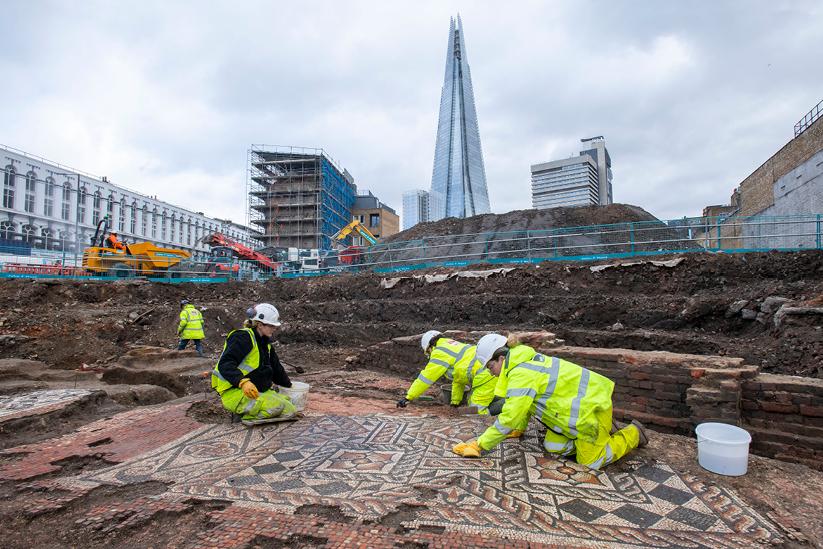
In this blog, Liz Goodman, our Conservation team leader, takes us through the painstaking process of lifting and storing the mosaics, so they can be returned to their original home for display as part of the Liberty development.
How to move a Roman mosaic (or two)
Step 1: Surveying and recording
Before we prepared to remove the mosaics from the site, we had to come up with a plan of action. Lifting ancient mosaics like these is a challenging task because nothing is holding the individual tesserae (the stone cubes that make up the mosaic) together anymore. Fortunately, we don’t take them out piece by piece as you’ll discover in the next step, otherwise, we’d probably still be there now.
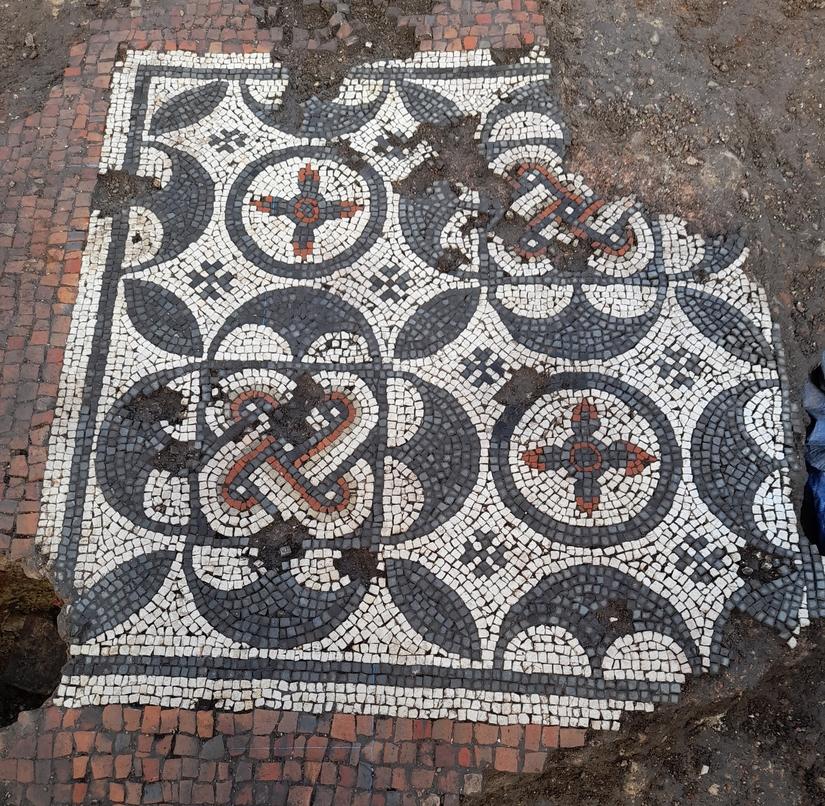
Step 2: Keeping it together
Because we wanted to lift each mosaic in one go, we started by creating a solid edge to keep all the tiny tesserae together. To do this, we stuck small squares of a special long-fibered paper over the sides and edges of the mosaic. We also reinforced any areas where tesserae were missing to help strengthen the mosaic when we lifted it.
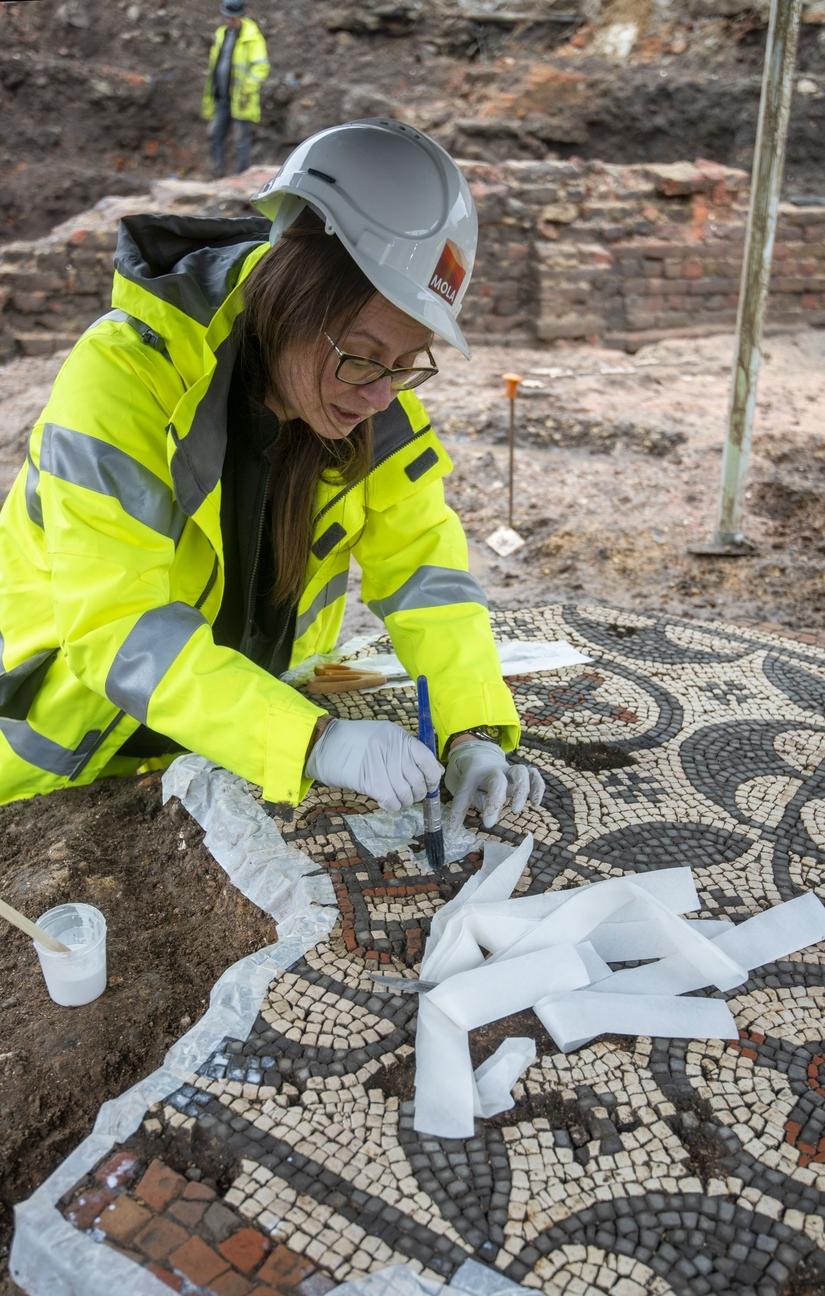
When the Romans made the mosaic, they set the tesserae in thin layer of fine white mortar to keep them together. However, this mortar had broken down over time and was very soft. So, once the edges had been reinforced, we added a layer of netting to the top of the mosaic. We stuck the netting to the tesserae to make sure they stayed in position.
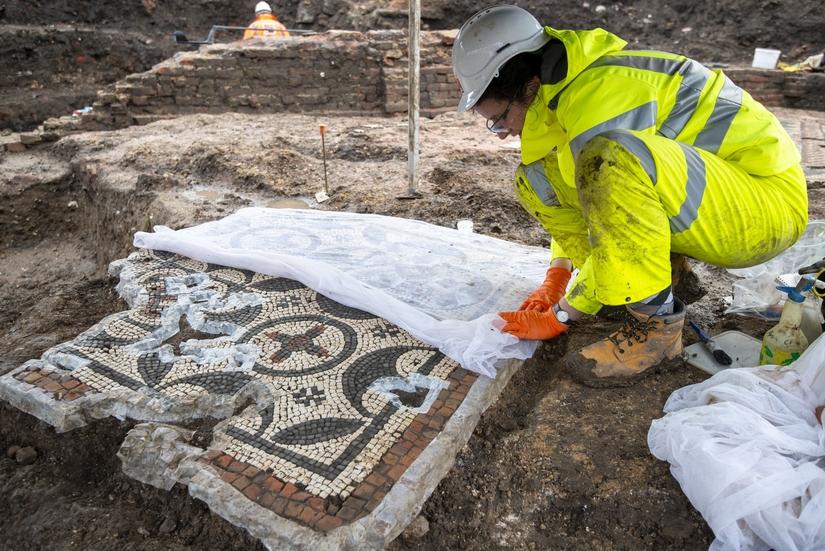
Step 3: Time to get lifting
The mosaics sat on a layer of mortar, like a type of cement. We planned to slide flat tools between the mosaic and the layer of mortar to separate them. Because the mosaics were so large, the hand tools we normally use in conservation were too small. Instead, we turned to long flat tools used for removing modern roof tiles. These worked perfectly and helped us reach a long way under the mosaic.
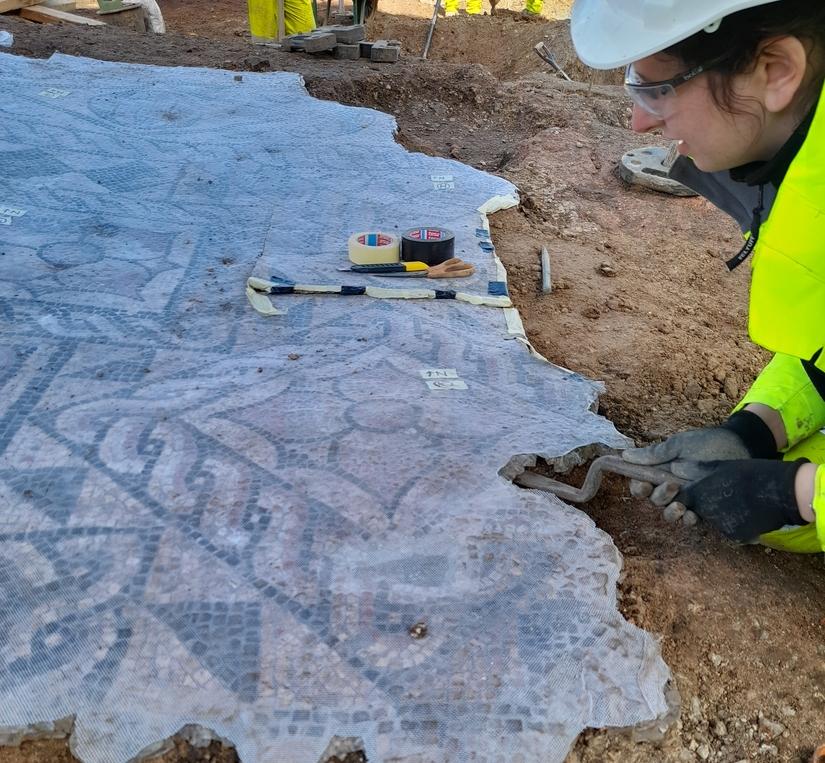
Once the adhesive became transparent, we knew it was dry, and it was time to start lifting the mosaics. With the net in place on top, this created a sheet of tesserae which we could move like a piece of fabric or a rug.
We're delighted that the mosaics, along with the incredibly rare Roman mausoleum we discovered in 2023, will be incorporated into a public display as part of the new development.
Archaeological investigations at The Liberty are being carried out by MOLA on behalf of Landsec, Transport for London (TfL), and Southwark Council.